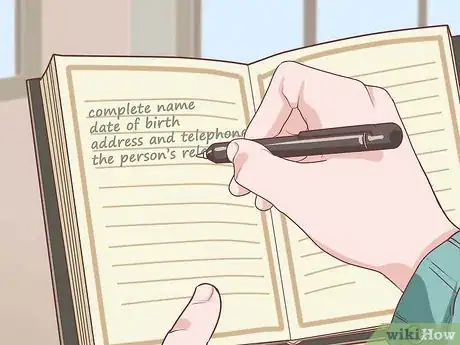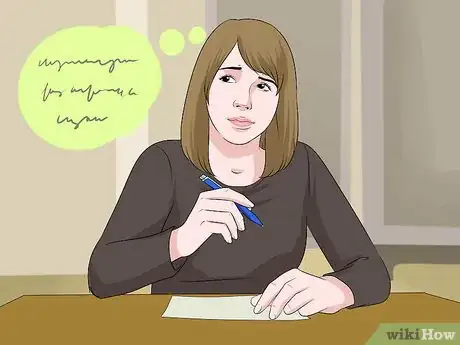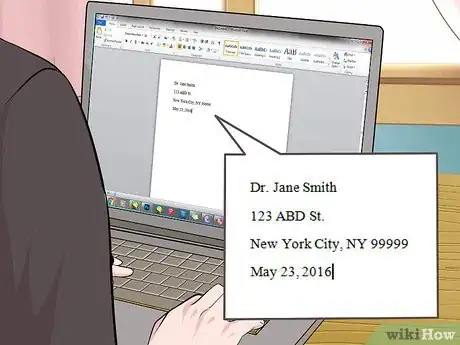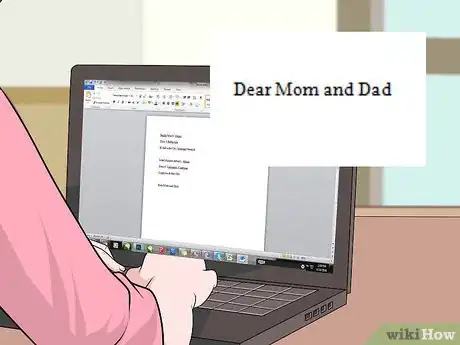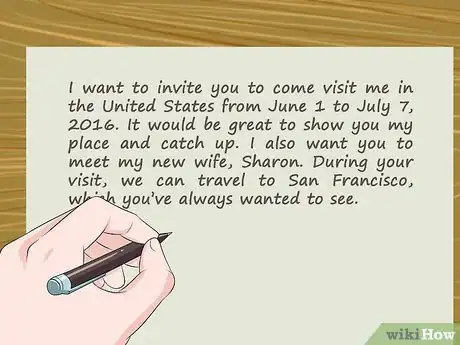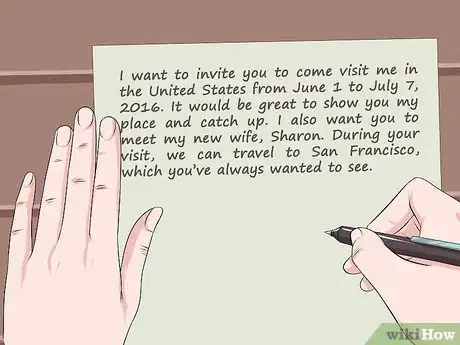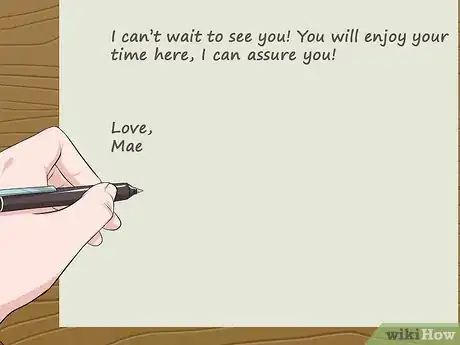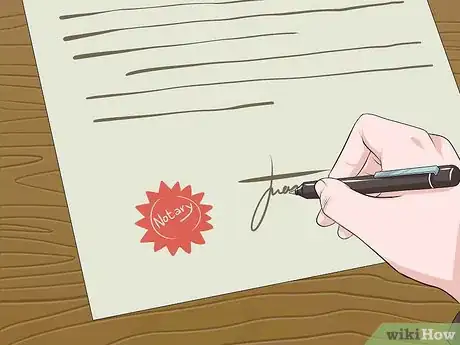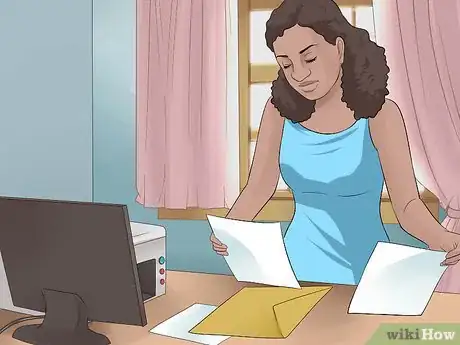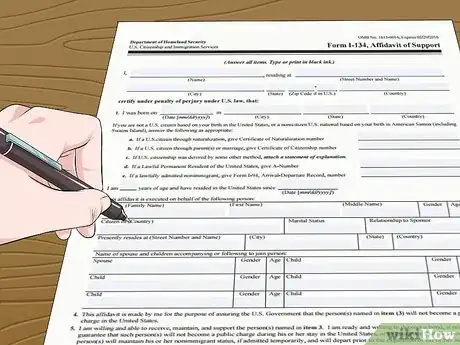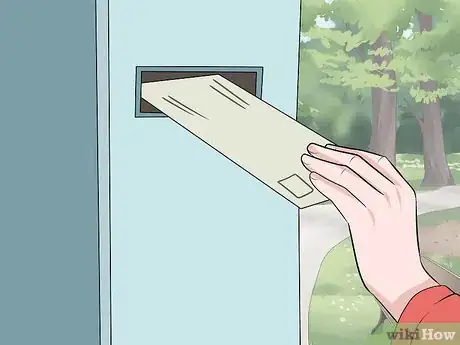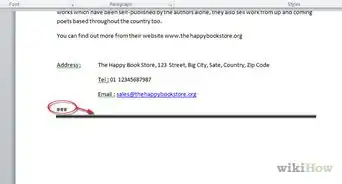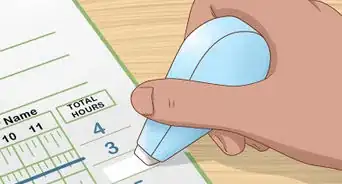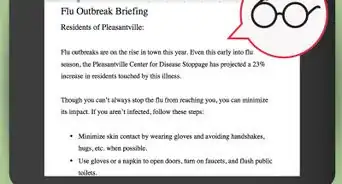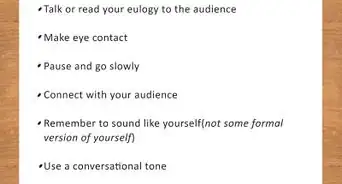This article was co-authored by Clinton M. Sandvick, JD, PhD. Clinton M. Sandvick worked as a civil litigator in California for over 7 years. He received his JD from the University of Wisconsin-Madison in 1998 and his PhD in American History from the University of Oregon in 2013.
There are 8 references cited in this article, which can be found at the bottom of the page.
This article has been viewed 60,057 times.
You can write an invitation letter if you are a citizen or lawful resident and a family member or friend wants to visit. Although the letter isn't required in the U.S., it could be helpful.[1] You should address the letter to the person who wants to visit you. Make sure to mention where they will be staying and how long they will be staying with you. If you are drafting a letter for someone to visit a country other than the U.S., then your letter might require different information.
Steps
Starting the Letter
-
1Get your country's requirements, if any. Some countries will have extensive lists of things you must include in the letter, whereas other countries will not have any requirements. You should check with your country's visa office and ask if there are any requirements. For example, in Canada, you must include the following information about the person you are inviting to visit:[2]
- complete name
- date of birth
- address and telephone number
- the person's relationship to you
- the purpose of their trip
- how long the person intends to stay in Canada
- where the person will stay
- how the person will pay for things
- the date the person intends to leave Canada
-
2Outline what you want to say. The purpose of the letter is to put your country's consulate at ease that your friend or family member isn't getting a tourist visa so that they can enter the country and never leave. Accordingly, you want to make sure that the consulate knows the person intends only to stay for a limited period of time.
- Go through your country's requirements, if there are any. Make sure to include all required information.
- Be sure to use your own language. The sample language provided in this article is used for illustrative purposes only. Say what you want to say in your own words and don't worry about sounding “official.”
Advertisement -
3Format the document. You should open a blank word processing document. Set the font to a comfortable size and style. For example, Times New Roman 12 point works for many people, though you could choose something equally readable.
- Set up the letter like a standard business letter. If you don't know what a standard business letter looks like, then search online for a sample.
-
4Insert your name and address. At the top of the page, justified with the left-hand margin, you should insert your name and address. Include your full street address, not a P.O. Box number.
-
5Insert your recipient's address. You need to identify the people you are inviting to come visit.[3] Tab two lines down from your address and then insert the address of the person who will be visiting you. Include name and full mailing address.
-
6Add a salutation. Begin the letter informally. For example, you could write, “Dear Mom and Dad” or something similar.[4]
- In some countries, you might have to address the letter to your immigration office. Check your country's requirements.
Drafting the Body of the Letter
-
1Extend an invitation to visit. In the first paragraph, you should extend an invitation and state what you will do during the visit. Try to work in all necessary details, depending on your country, such as the purpose of the visit and the dates (or approximate dates) of the visit.[5]
- For example, you could write: “I want to invite you to come visit me in the United States from June 1 to July 7, 2016. It would be great to show you my place and catch up. I also want you to meet my new wife, Sharon. During your visit, we can travel to San Francisco, which you've always wanted to see.”[6]
-
2Describe your financial support. You also need to include information about what financial support you will be offering your visitor.[7] If you are offering financial support for a visit to the U.S., then remember to fill out Form I-134 Affidavit of Support, which you can get online.[8]
- Sample language could read, “I will pay for everything involved in the trip: travel to and from Los Angeles, California, travel to San Francisco, and all meals and housing. I will make reservations and pay for the rooms on our road trip to San Francisco.”
-
3State where the visitor will stay. If your visitors will be staying at your home for the visit, then be sure to state that. Otherwise, include where they will be staying, such as the hotel where they have a reservation.
- You could write, “You will stay with me in our guest room at my home located at the above-mentioned address. Sharon and I will provide for your food and other necessities.”
-
4Conclude the letter. Remember to end the letter in a natural way. You are not writing a professional business letter. Feel free to show emotion and excitement that you will soon be seeing your friends or family.
- For example, you could write, “I can't wait to see you! You will enjoy your time here, I can assure you! Love, [your full name].”[9]
- Remember to include your full name (first and last). This does make the letter seem more formal. Nevertheless, the visa office will probably want the full name so that they know who is writing the letter.
Finalizing the Letter
-
1Sign in front of a notary. You might have to have the letter notarized. You should check with your visa office to see if this is required in your country.[10]
- You can find a notary public in most courthouses and large banks. You can also use the notary locator at the website for the American Society of Notaries.[11] Enter your zip code and find the nearest notary public.
- Be sure to bring sufficient personal identification to show the notary. Generally, a valid driver's license or passport is sufficient.
-
2Include other documents. In some countries, you will need to provide documents along with your letter. For example, in Canada you will need to provide the following documents, so you should get them before you sit down to draft your letter:[12]
- a copy of your birth certificate, if you were born in Canada
- a Canadian citizenship card, if you are a naturalized Canadian citizen
- a copy of your PR card or IMM 1000 proof of landing, if you are permanent resident of Canada
-
3Complete an Affidavit of Financial Support. If your friends or relatives are visiting the United States, then you will need to fill out Form I-134, Affidavit of Support. The affidavit requires the following information:[13]
- your name and address
- your date and location of birth
- your Certificate of Naturalization, Certificate of Citizenship, or other information if you are not a U.S. citizen
- your age and how long you have resided in the U.S.
- how many dependents you have
- the names and addresses of who will be visiting
- your relationship to those visiting
- information about your job, such as the name and address
- your annual income (attach an income tax return if self-employed)
- amount of savings, personal property, and stocks and bonds
- how much you intend to make in direct contributions to your visitors, if any
-
4Mail the letter. Once you complete the letter, make a copy for your records. You should then mail the letter to your friend or relative. He or she will have to show the letter to the consular office when trying to get a visa.[14]
- To make sure that the letter was received, you should mail it certified mail, return receipt requested.
References
- ↑ http://www.alllaw.com/articles/nolo/us-immigration/how-when-write-visa-letter-of-invitation.html
- ↑ http://www.cic.gc.ca/english/visit/letter.asp
- ↑ http://international.uiowa.edu/isss/current/family/inviting-parents-friends-and-other-non-dependent-relatives-us-students
- ↑ http://www.alllaw.com/articles/nolo/us-immigration/how-when-write-visa-letter-of-invitation.html
- ↑ http://international.uiowa.edu/isss/current/family/inviting-parents-friends-and-other-non-dependent-relatives-us-students
- ↑ http://www.alllaw.com/articles/nolo/us-immigration/how-when-write-visa-letter-of-invitation.html
- ↑ http://international.uiowa.edu/isss/current/family/inviting-parents-friends-and-other-non-dependent-relatives-us-students
- ↑ https://www.uscis.gov/sites/default/files/files/form/i-134.pdf
- ↑ http://www.alllaw.com/articles/nolo/us-immigration/how-when-write-visa-letter-of-invitation.html
- ↑ http://www.cic.gc.ca/english/visit/letter.asp
- ↑ https://www.asnnotary.org/?form=locator
- ↑ http://www.cic.gc.ca/english/visit/letter.asp
- ↑ https://www.uscis.gov/sites/default/files/files/form/i-134.pdf
- ↑ http://www.alllaw.com/articles/nolo/us-immigration/how-when-write-visa-letter-of-invitation.html
About This Article
Before you write an invitation letter for a visa, check with your country's visa office what the requirements are, because they can vary considerably. Regardless of your country's requirements, you'll most likely need to include your full name, date of birth, address, and phone number in the letter. Also, you should provide details about the person who will be visiting you, like their relationship to you, the reason for their trip, where they'll stay, and how long they'll be there. Finally, visit an attorney to get your letter notarized. For tips on what other documents you may need to send with your letter, read on!
